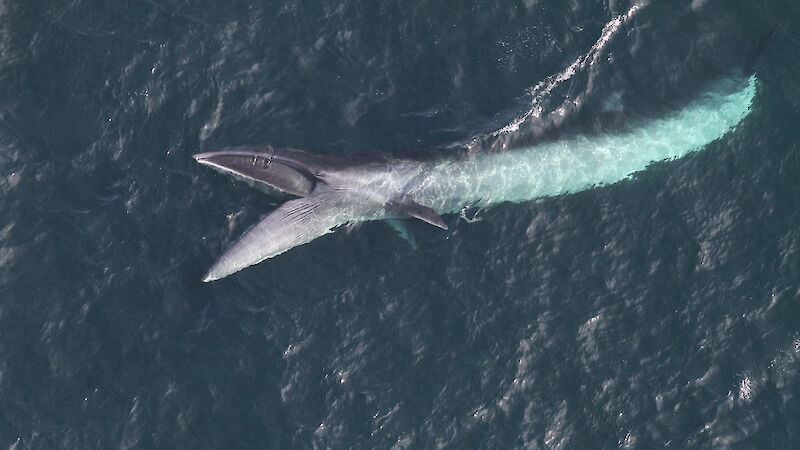Scientific name: Balaenoptera borealis
Physical description
Sei (pronounced ‘say') whales are the third largest of the baleen whales, reaching about 16 metres and 25 tonnes.
While Sei whales are often pictured as uniformly coloured, they often have very subtle, beautiful swirling markings on their skin.
Sei whales are possibly the fastest swimming baleen whales, and have been clocked at 25 km/h for an hour when chased by whalers.
Sei whales, like other baleen whales, do not seem to form lasting family groups (unlike many toothed whales) and very little is known of their social lives; they are usually seen in groups of less than five.
Sei whales rarely dive deeper than 300 m, or for more than 20 minutes, as their prey is usually found quite close to the surface.
Distribution and abundance
The most ‘northerly’ of the Antarctic baleen whales, sei whales are often found to the north of the Polar Front in summer, as far as north Tasmania; but they are seen occasionally feeding in the southern most navigable waters of Antarctica.
Threats
After the larger blue and fin whales were decimated by Antarctic whaling in the 1950s and 1960s, sei whales became the target, and were not protected until 1978. Their numbers were severely reduced.
Conservation status: endangered
Breeding
Sei whale winter breeding areas are unknown, but probably lie somewhere in deep tropical waters; however some individuals have been seen around Tasmania in winter, possibly non-breeding whales.
After a pregnancy of 11.5 months, a single calf is born in winter, and is suckled for about seven months before becoming independent of its mother.
Diet and feeding
Sei whales are the only member of the rorqual family (the ‘groove throated’ whales including the humpback and blue whales) that feed on minute copepod crustaceans, rather than on larger krill. Their feeding method is different too: rather than ‘gulping’ their food in large mouthfuls, they ‘skim’ it by swimming along with their mouths open.

